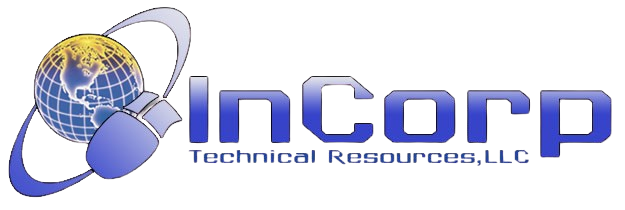
Missing payroll is more than a bad look. It’s a fast way to lose trust, face penalties, or both. For employees, it shakes confidence and fuels doubts about leadership. For business owners, it creates a mess that’s hard to clean up. Payroll is one of those processes that either runs quietly in the background or loudly disrupts everything when it fails.
What Is the Payroll Process?
The payroll process refers to the company’s structured steps to compensate employees correctly and on time. It begins with collecting hours worked and ends with issuing payments and tax reports. While that might sound simple, it’s layered with rules, deductions, and documentation. Any misstep can lead to confusion, loss of trust, or legal issues.
Defining the Payroll Process
The payroll process includes gathering employee information, calculating earnings, and distributing wages. It also involves deducting taxes and contributions, filing reports, and maintaining records. It’s not just about writing checks; it’s a financial system that supports employees and protects the business. This process ensures that wages comply with employment contracts and labor laws. It’s part administrative, part legal, and part accounting.
Core Steps in the Payroll Process
Each payroll cycle typically starts with tracking time worked or verifying salaried schedules. Employers then calculate gross pay, subtract taxes and deductions, and arrive at the net income. After that, payments are made through checks, direct deposit, or payroll apps. Taxes are submitted to the right agencies, along with required forms. The cycle concludes with storing payroll data for audits, taxes, and planning purposes.
Why the Payroll Process Matters for Business Health
Payroll isn’t just a back-office function; it impacts every corner of the business. It addresses employee satisfaction, legal compliance, and overall financial well-being. A well-run payroll process creates confidence and keeps teams motivated. A poorly run one triggers disruption, stress, and exposure to penalties.
It Affects Employee Trust and Retention
Timely and correct pay creates a foundation of trust. When paychecks are wrong or late, frustration sets in fast. Even one mistake can shake employee confidence. Repeated errors often lead to higher turnover. Employees value reliability, and payroll is where it starts.
It Keeps Businesses Legally Safe
Payroll mistakes can land companies in legal trouble. Underpaid taxes or misclassified workers attract audits and fines. Local, state, and federal laws all apply, often with strict deadlines. Having a clean, consistent payroll process helps reduce that risk. It also makes government audits faster and less painful.
It Supports Smooth Financial Planning
Accurate payroll impacts budgeting, tax forecasting, and cash flow. Miscalculations in labor costs can throw off an entire budget. Reliable payroll data enables owners to plan more effectively, manage expenses more efficiently, and grow their businesses strategically. Knowing exactly what you owe and when keeps operations lean and efficient. It also helps avoid borrowing to make payroll.
How Payroll Impacts Company Culture
A reliable payroll system quietly reinforces a strong company culture. When employees are paid correctly and on time, it creates a sense of structure and respect. That trust extends into how they view management, the workplace, and their long-term future with the business. Consistent pay also supports open communication and transparency, which are central to a healthy culture. On the flip side, frequent payroll mistakes create anxiety, silence feedback, and make teams feel like an afterthought.
Payroll Process Components That Must Work Together
The payroll process has many interdependent components. From gathering time data to filing taxes, everything must be accurate and timely. Errors in one area often create trouble across the board. Connecting all components tightly is the only way to keep it running smoothly.

Employee Classification and Pay Structure
Classifying employees correctly is crucial. Full-time, part-time, and contractors have different tax and benefit rules. Salaried staff may have a fixed pay, while hourly workers typically require time tracking. Mistakes in classification can result in back taxes and legal claims. Clear roles and proper pay setups reduce risk and confusion.
Deductions and Withholdings
Every paycheck must include mandatory deductions, such as federal income tax and Social Security. There are also voluntary options, such as health insurance or retirement plans. Each needs careful calculation and recordkeeping. Missing one step could result in costly fines or angry employees. Payroll software often helps by applying rules consistently and accurately.
Payment Delivery and Frequency
How often employees get paid, whether weekly, bi-weekly, or monthly, matters. So does the method, whether it’s direct deposit, check, or digital transfer. Employees expect predictable, convenient pay. Businesses need to match their payroll schedule with their cash flow. Consistency in both areas builds trust and reduces payroll stress.
Tax Filing and Reporting
Employers must submit taxes and forms on strict deadlines. Federal, state, and sometimes city taxes apply. W-2s, 1099s, and quarterly filings all demand accuracy. Missing a date or underreporting can result in penalties. A tight payroll process makes filing smoother and more reliable.
Recordkeeping and Documentation
Storing payroll records, including timesheets, pay stubs, and tax filings, is not optional. Labor laws often require keeping them for several years. Organized records protect the business in the event of audits or disputes. They also help HR and finance stay aligned.
Payroll Process As a Strategic Business Tool
Payroll data offers more than just numbers; it reveals workforce trends, overtime costs, and hiring patterns. Businesses that analyze this data can identify inefficiencies, seasonal fluctuations, or high turnover rates before they become costly. It also helps forecast labor needs or decide when to shift from part-time to full-time hires. When used strategically, payroll isn’t just compliance but a planning tool supporting growth. Ignoring this insight leaves money and clarity on the table.
Challenges in Managing the Payroll Process
Running payroll isn’t always smooth, especially for small or growing businesses. Mistakes are common, and scaling introduces new obstacles. Even companies with the best intentions can get overwhelmed. Anticipating challenges makes it easier to avoid disruptions.
Common Mistakes and Their Ripple Effects
Simple errors, such as entering the wrong hours or forgetting to apply a deduction, can lead to more significant issues. These may include incorrect tax filings, compliance failures, or employee dissatisfaction. Mistakes also waste time fixing problems and rebuilding trust. The longer errors go unnoticed, the more damage they cause. Preventing issues is always more efficient than fixing them.
Scaling Payroll With Business Growth
A spreadsheet might work for five people but not for fifty. As the team grows, so does the complexity of payroll. Different states offer varying benefits, and new tax rules take effect. Manual methods break under that pressure. Automation and expert support become necessary to keep up.

Handling Compliance Across Jurisdictions
Hiring across state or country lines adds tax and labor law challenges. Each region may require different forms, taxes, and schedules. One oversight could lead to audits or penalties. Businesses must stay informed and adapt quickly to remain competitive. Payroll tools or service providers often help manage this complexity.
Payroll and Remote or Hybrid Teams
Remote and hybrid teams offer flexibility but also introduce payroll complications. Paying employees across state or national borders means managing different tax codes, holidays, and pay expectations. Some regions require specific forms or digital payment methods. Without a system in place for remote operations, businesses may inadvertently violate labor laws. A modern payroll process must be able to support both traditional and location-flexible teams.
Adapting Payroll for Seasonal and Hourly Workforces
Businesses with seasonal or hourly workers face unique payroll challenges. Hours can vary weekly, and staffing levels often shift quickly. It demands a payroll system that’s flexible and fast. Pay periods may need to align with contracts, and compliance rules vary depending on the job type or location. Without automation or specialized tools, managing seasonal payroll becomes an all-consuming task.
Payroll Process Solutions That Save Time and Money
Businesses have several options for managing payroll efficiently. The right choice depends on team size, resources, and growth goals. Each method has its advantages and trade-offs. What works for one company might slow down another.
In-House Payroll Systems
Small companies sometimes manage payroll in-house to save money. They may use spreadsheets or basic accounting software. It offers control and privacy but increases the chance of mistakes. It also takes time away from more strategic work. Once complexity grows, it becomes less practical.
Outsourcing Payroll Services
Hiring a payroll provider offloads tax filing, payment processing, and compliance responsibilities. These services specialize in accuracy and legal updates. While there’s a cost, it’s often cheaper than fixing errors later. Business owners get peace of mind and more time to focus on growth. Providers also handle year-end tax documents automatically.
Using Payroll Software
Payroll software automates most steps: calculations, deductions, payments, and reporting. It often integrates with HR and accounting tools, making the process seamless and efficient. Cloud-based platforms offer real-time updates and mobile access. Many platforms instantly adjust for new laws or payroll changes. For growing teams, the software brings speed and reliability.
Hybrid Approaches for Flexibility
Some businesses use a mix of software and human support. They may run reports in-house but rely on a provider to file taxes. This balances cost, control, and accuracy. Hybrid setups work well for businesses in transition. They enable companies to scale payroll without having to start over.
Integrating Payroll With HR and Accounting
When payroll integrates with HR and accounting software, everything runs smoother. Time-off requests, benefit changes, and hiring updates are integrated directly into payroll calculations. That reduces double entry and manual errors. It also helps finance teams track real-time labor costs and stay aligned with budgets. Integration transforms payroll into a dynamic system, not just a monthly task, making it easier to manage and less prone to errors.
Turn the Payroll Process Into a Competitive Advantage
Payroll doesn’t just cut checks; it cuts through chaos when done right. It’s one of the few systems that touches every part of your business, from morale to legal standing to financial clarity. When it runs smoothly, your team feels valued, your risks decrease, and your decisions become sharper. That edge isn’t reserved for big corporations; it’s available to any business that treats payroll as a strategic tool, not a chore. Start turning your payroll process into the reason your business runs better than the rest.
Looking for more insights like this? Visit the Incorp Technical Resources blog for straight answers and smarter business solutions.
